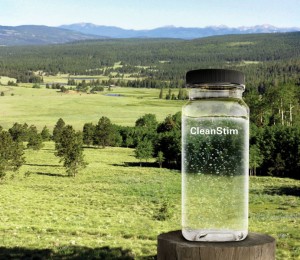Industry’s environmental focus extends to a food-industry sourced fracturing option

The business of fracturing is taking cues from the food industry. Halliburton has introduced a series of technologies, CleanSuite, that promises to deliver low-impact fracturing fluid components, fight bacteria without the use of biocides and clean water with minimal use of chemicals. The suite of services consists of three systems (CleanStim, CleanStream and CleanWave), 3-D subsurface fracture mapping, and advanced dry polymer blending (ADP) technology. In an effort to be transparent when it comes to the fracturing process, the company has also launched a website that details components used during the fracturing process and compares them with common household products.
“This is revolutionary stuff,” remarked Marc Edwards, executive vice president of Halliburton’s completion and production division. “It’s good for the industry, good for fracturing, good for stakeholders and good for the public.”
“Halliburton pioneered fracturing technology more than 60 years ago, but the safe and efficient use of this technology has never been more important or in greater demand than it is right now,” said David Adams, vice president of Halliburton’s production enhancement service line.
The CleanStim service, the newest addition to the CleanSuite systems, uses ingredients sourced from the food industry to provide an extra margin of safety to people, animals and the environment. This addition can potentially set a new standard for how unconventional resources may be accessed and produced. CleanStim uses a gelling agent, crosslinker/buffer, breakers and a surfactant in low concentrations similar to those found in the food industry. While the system is applicable over a broad temperature range (providing up to 30 minutes of pumping time at 225°F), it does have limitations at high temperatures.
CleanStim components were selected from food additives identified as Generally Recognized as Safe (GRAS) by the US Food and Drug Administration and is the result of an accelerated effort based on operator requests and as a means to address concerns expressed by the public. Use of the system during 12 treatments on three wells has yielded 80% retained conductivity compared with 40% achieved using conventional borates. Applications include gelled fracturing treatments that require a significant amount of proppant. In addition, the components can be used to create a linear fluid system to provide friction reduction for water frac treatments commonly used in shale reservoirs.
The CleanStream service, which has been applied in the field since 2009, eliminates use of biocides on location. The capability of this service, which uses ultraviolet light to disinfect flowback water, carries the same 99% effectiveness as that of a hand sanitizer. As fluids flow through specialized chambers in a mobile unit, the fluid is irradiated with UV light. As this light passes through the liquid media, it is absorbed into the bacteria’s cell wall, thereby killing the bacteria colony by rendering it unable to produce proteins or replicate. Use of CleanStream is meant to reduce the use of traditional biocides while protecting the performance of fracturing additives.
The CleanWave portion of the CleanSuite offering features a mobile electrocoagulation component that uses electricity to treat flowback and produced water at rates of up to 26,000 bbl/day while using minimal power. In Utah, this water treatment service accelerated winter drilling operations, eliminating more than 1,000 truck trips and realizing more than $250,000 in water management savings.
Also on the environmental front, the ADP blender mixes fracturing fluids from a dry-polymer base rather than a hydrocarbon-based concentrate. The blender offers a mechanical solution to a chemical challenge. Now, with the development of the ADP blender, liquid gel concentrates used historically to blend fracturing fluids are no longer needed. This new blender enables fracturing fluid systems to be mixed on the fly from a dry powder, eliminating the need for carrier fluids and the inherent liquid volume.
Public information
Included on Halliburton’s just-launched website on hydraulic fracturing is content designed to provide the public with educational material that, among other things, highlights information related to the identity and common uses of the additives and constituents generally involved in the hydraulic fracturing process – additives that typically comprise less than half of 1% of the total water-and-sand-based solution.
“Halliburton has just made available new web pages to emphasize our forthright disclosure of the additives and constituents that are used for several typical wells in Pennsylvania. We believe this effort represents an important and substantive contribution to the broader long-term imperative of transparency,” Mr Adams noted.
The website also contains a description of the company’s advances in the field of 3-D, subsurface fracture mapping, along with information on how ADP blender technology is being used to reduce chemical additive usage even further.




